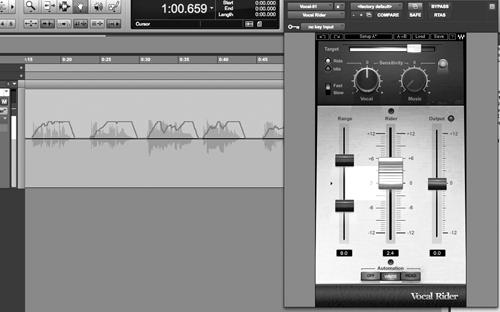
INSTALL AND BASICS
Vocal Rider comes in both mono and stereo versions, and works in real time at up to 24-bits and 96kHz sampling rate. Like all Waves plug-ins, it requires that you have an iLok with an authorization on it to run Vocal Rider, and that’s true even for demo purposes. Waves will send you a demo license for your iLok pretty much on demand, but if you don’t have an iLok you will not be able to even try out the plug.
But once you have a license, installation is straightforward and you’ll see the plug-in show up in your menu.
If you’re already a Waves plug user, there is one caveat. Vocal Rider is part of Waves V7 plug-ins. If you’re running V6, you’ll have no problem. But if you’re running version 4 or 5, installing V7 will remove older installations (with a prompt, of course). To run Vocal Rider and your older plug-ins, you’ll need to upgrade them to V7 versions, which is not a bad idea anyway, as V7 offers several performance enhancements. Besides, it’s free if you’re on the Waves update plan, otherwise known as WUP.
Since Vocal Rider is supplied available in TDM, RTAS, VST, and AU formats, it will work in Pro Tools and several other editors on the Macintosh. On the PC it will also work in Pro Tools and editors that handle VST plugs, including Sound Forge (versions 9/10), Vegas (versions 8/9), and Audition (version 3 and greater). However, the side-chain input feature only works in Pro Tools on both platforms, and on a couple of music-oriented editors on the Mac. The side-chain function doesn’t work in Forge, Vegas, or Audition. This is a minor drag, but it’s not a deal-killer as you’ll see just below. I did use Pro Tools on both platforms to evaluate the Vocal Rider.
